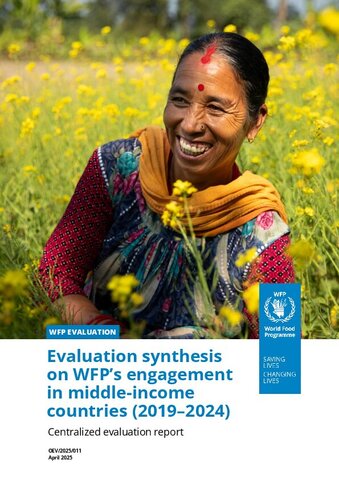
Despite representing the majority of WFP’s operational contexts, MICs accounted for only 34 percent of its total funding over the period 2019–2024. The synthesis concludes that:
- The category of MICs is too broad to inform programming effectively. However, upper-middle-income countries share characteristics that make them particularly distinct within this broader group;
- The absence of a clear rationale for WFP’s engagement in such settings has constrained its strategic positioning;
- WFP could better articulate its strategies and programme offer particularly in MICs hosting refugees and internally displaced persons, and assisting irregular migrants; in MICs where it does not target direct beneficiaries; and in MICs transitioning out of crisis.
The main elements of strengths identified in the evaluations are:
- WFP's increasingly diversified role and programme offer in MICs, while maintaining consolidated service delivery and emergency response functions;
- WFP’s adaptive capacity to respond to government requests and pivot towards crisis response.
Evidence of key contributions by WFP in MICs was found in: strengthened food security and nutrition systems; expanded social protection during crises; improved policy frameworks; enhanced disaster preparedness; gender-inclusive economic opportunities; and improved social cohesion and refugee integration into national systems.
Challenges and missed opportunities in MICs were noted in:
- Navigating uncertain financing prospects when countries move from low to middle-income status;
- Moving ‘upstream’ from small-scale, single initiatives and adopting a coherent approach to programming and partnerships, considering the vulnerability to piecemeal donor funding;
- Capturing and conveying WFP’s added value and contributions to national systems and capacities.


